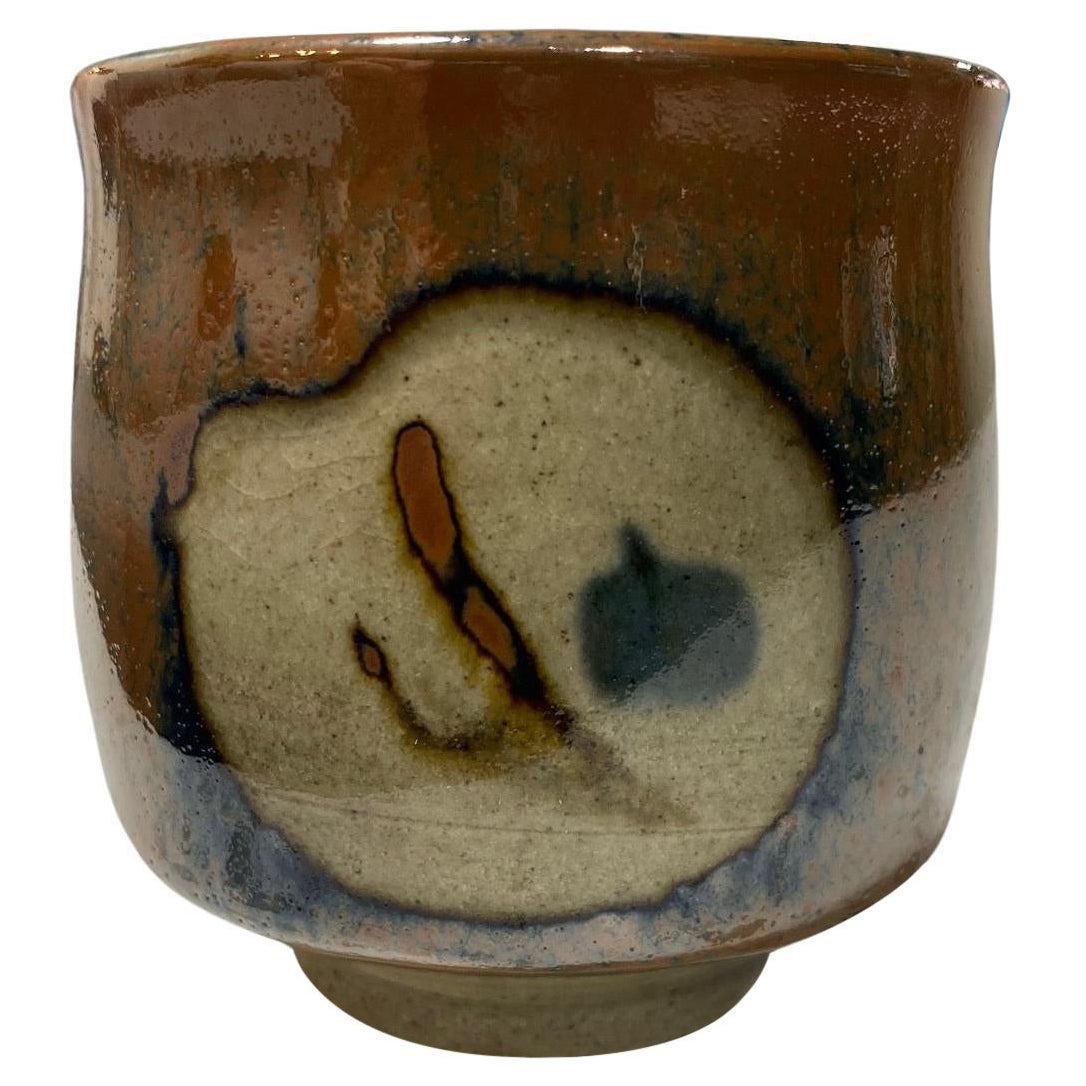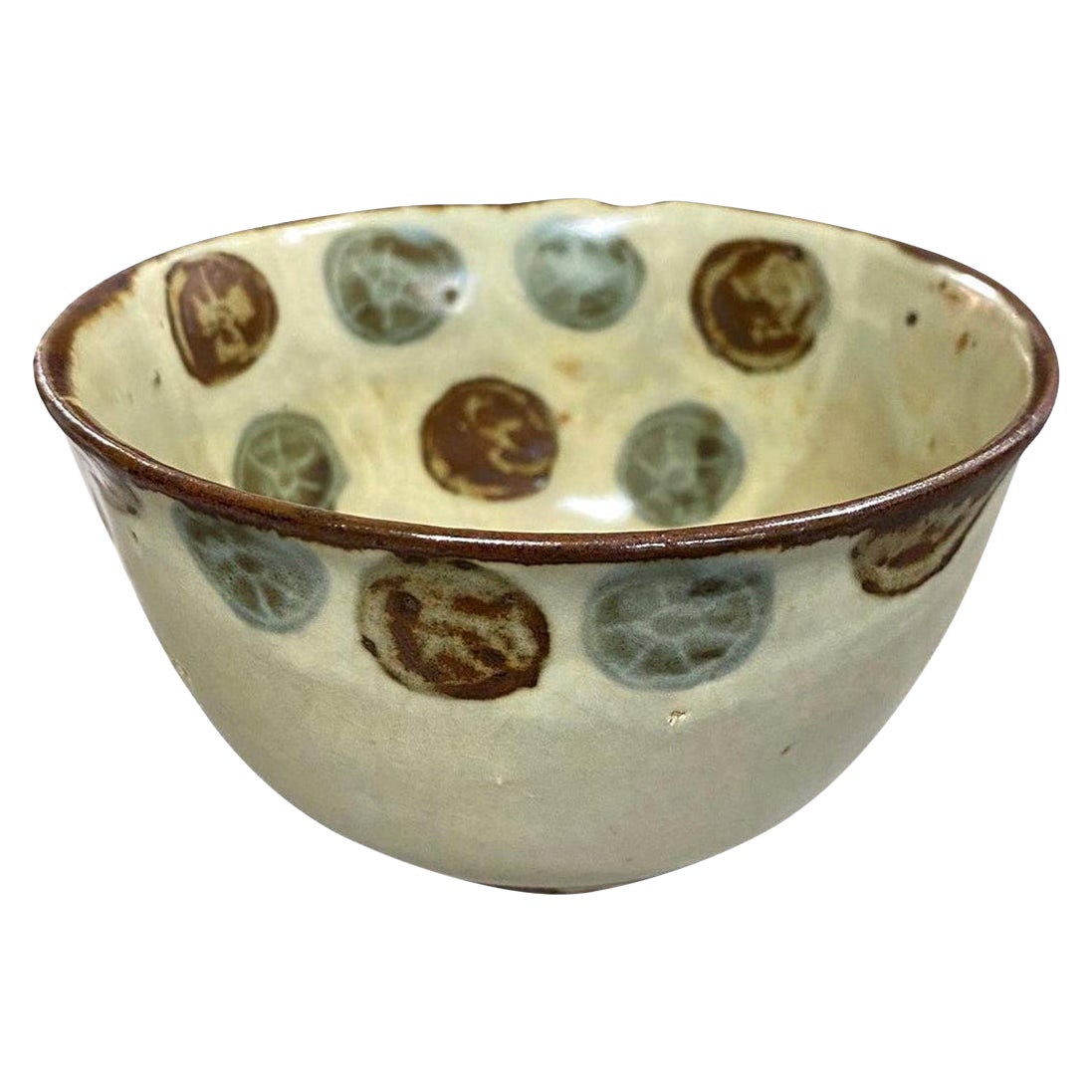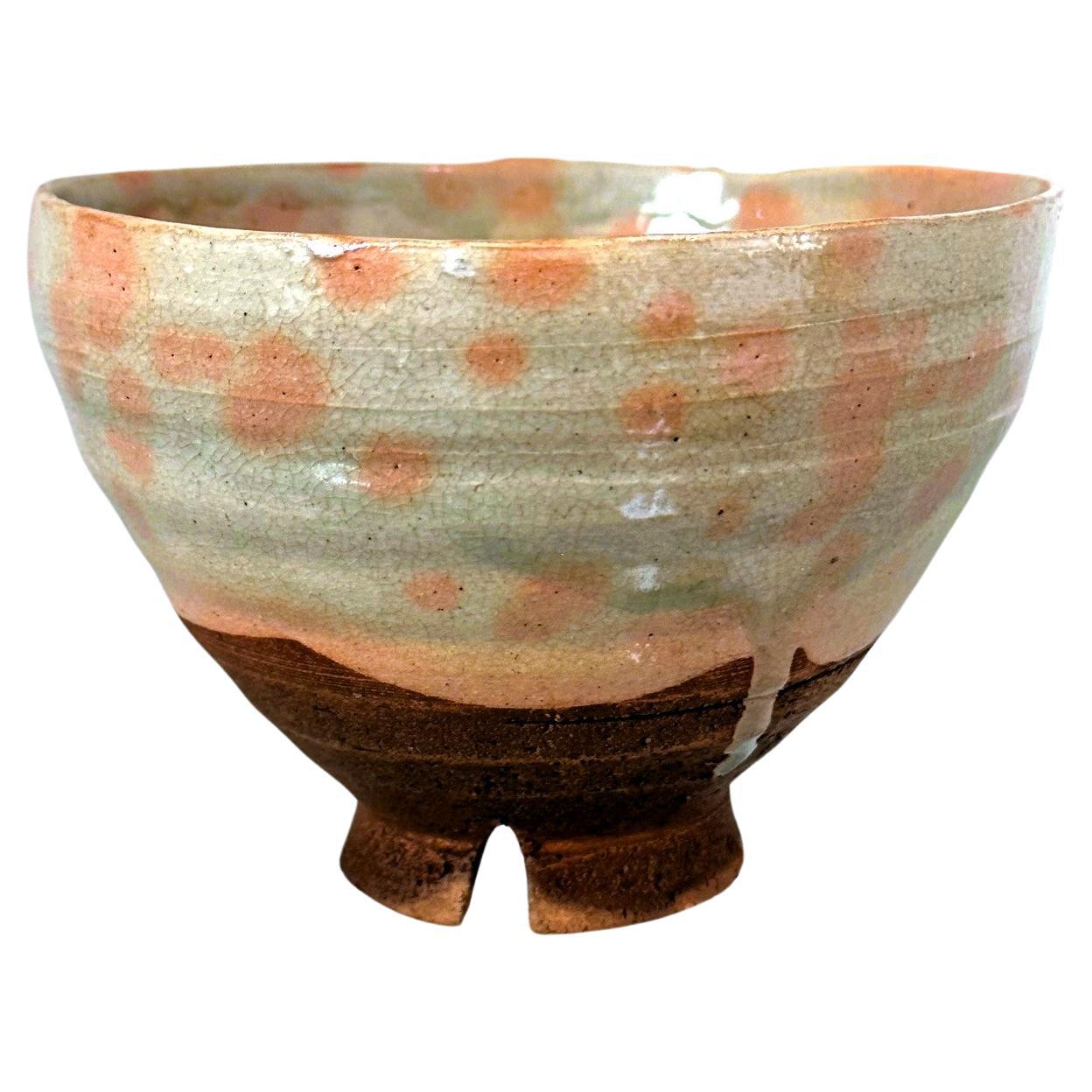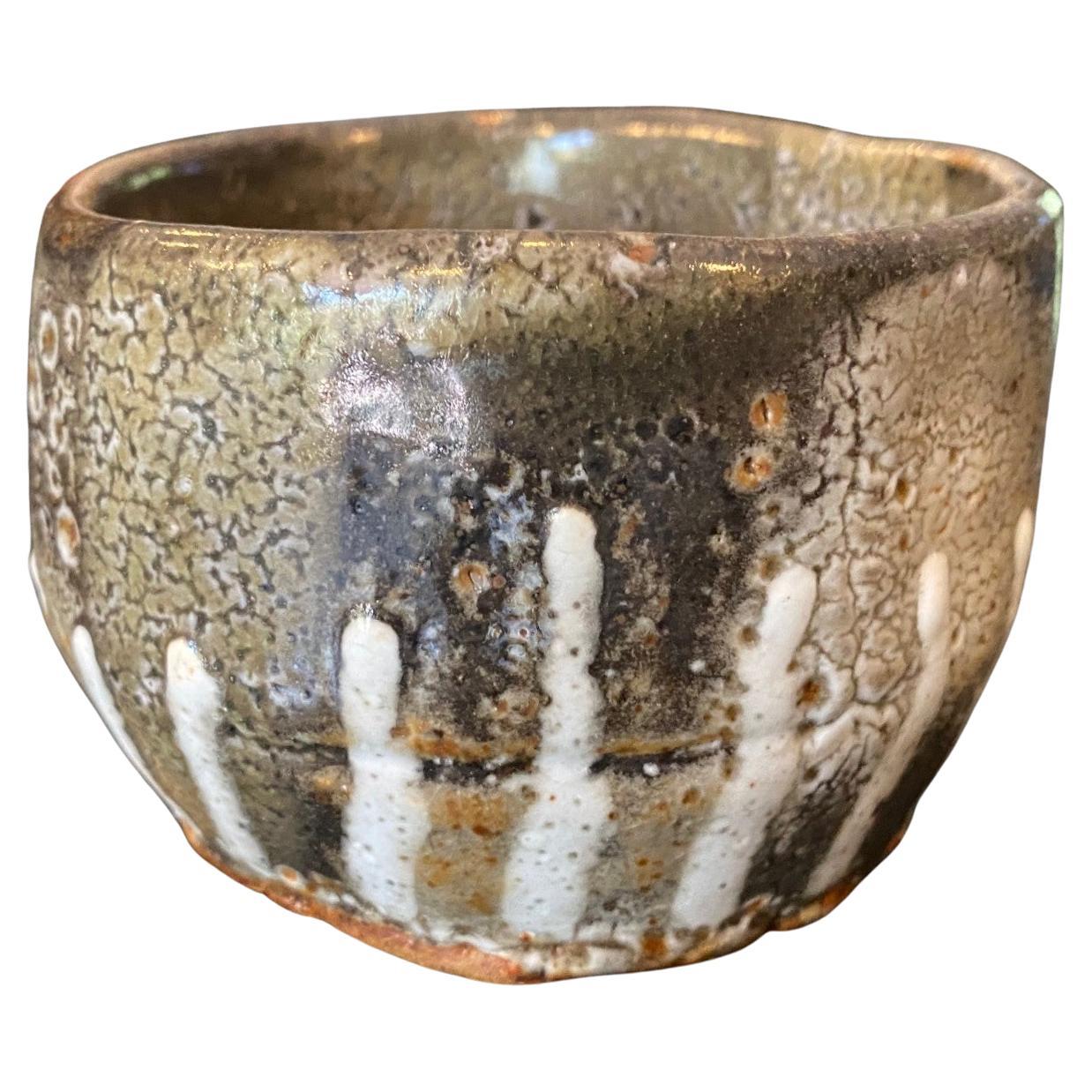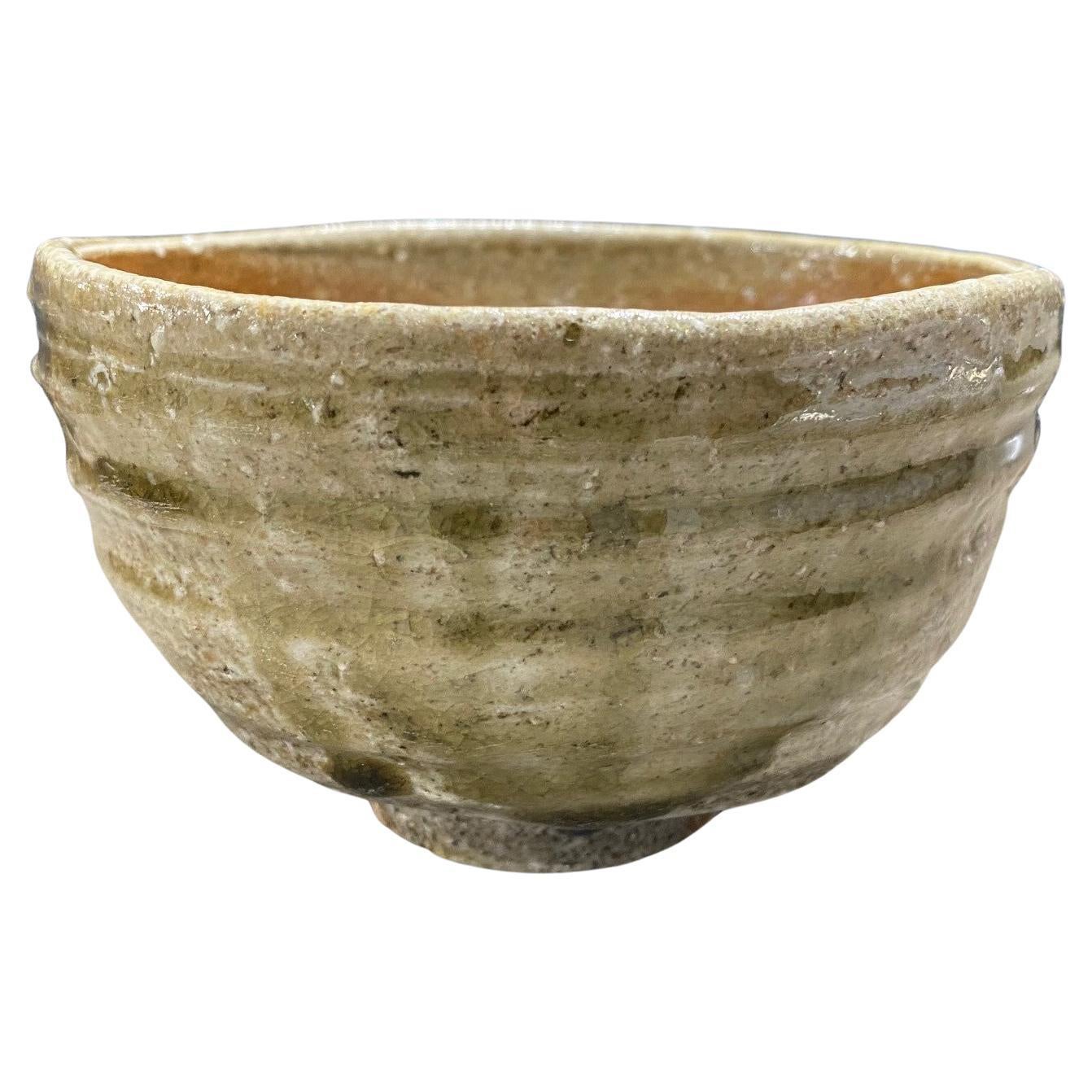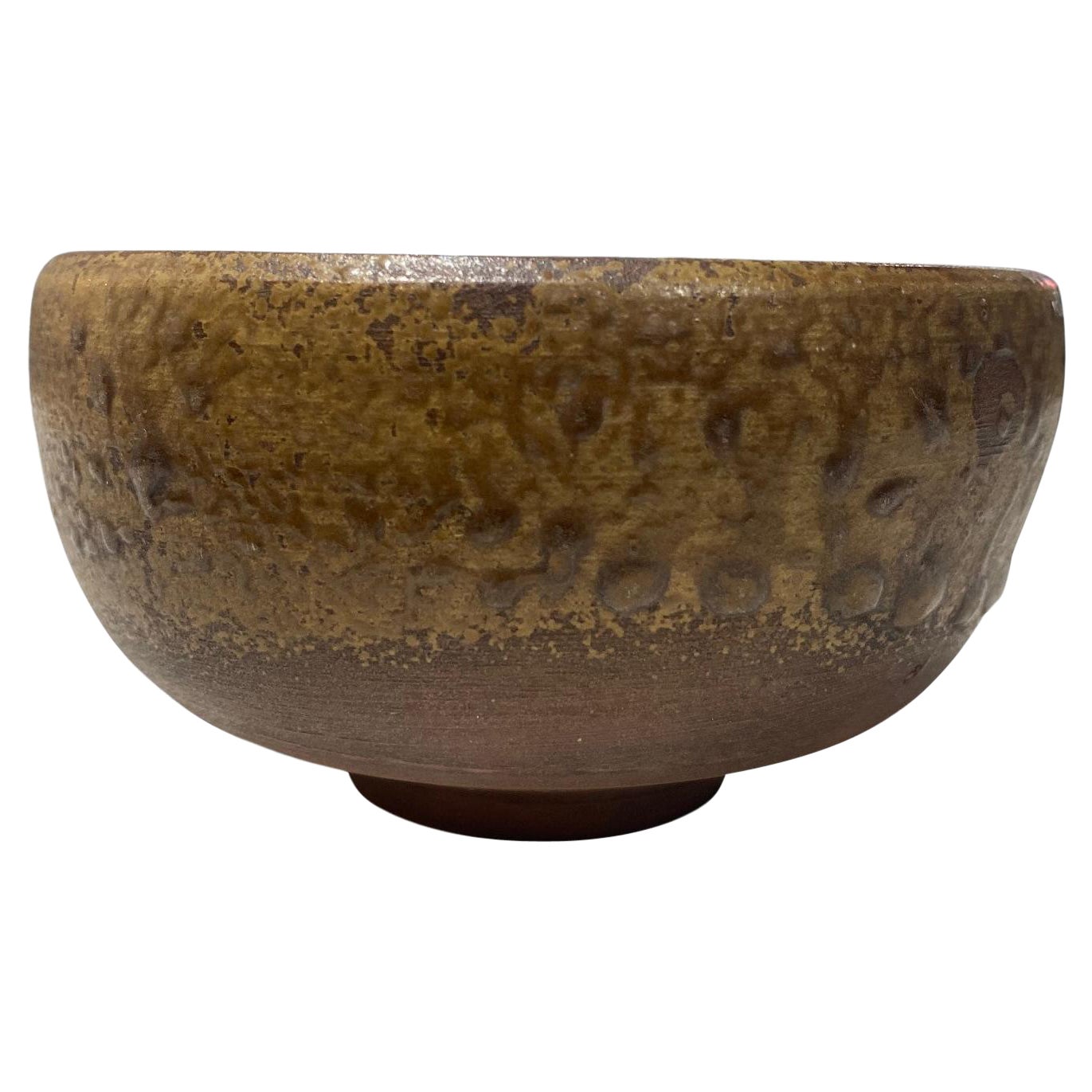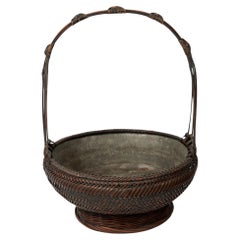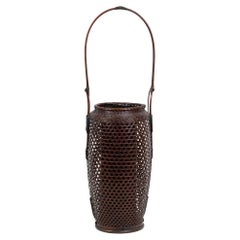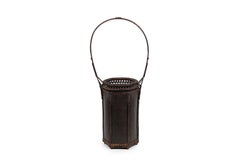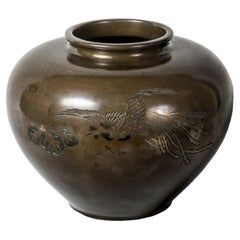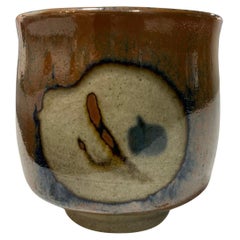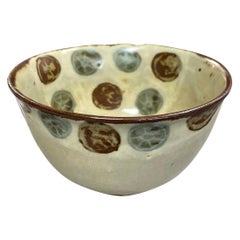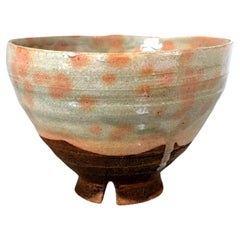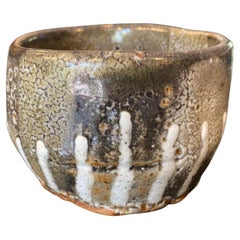Items Similar to Japanese Shawan tea cup in celadon with corded pattern by to Tenzo Shimaoka
Want more images or videos?
Request additional images or videos from the seller
1 of 7
Japanese Shawan tea cup in celadon with corded pattern by to Tenzo Shimaoka
$1,796.61
£1,331.39
€1,500
CA$2,452.71
A$2,728.54
CHF 1,430.34
MX$33,342.13
NOK 18,213.55
SEK 17,145.54
DKK 11,420.87
Shipping
Retrieving quote...The 1stDibs Promise:
Authenticity Guarantee,
Money-Back Guarantee,
24-Hour Cancellation
About the Item
Celadon tea cup with corded patterns glazed in the Jômon zogan style made by Tatsuzô Shimaoka (1919-2007, Mingei school). Developed by himself, this style is inspired by ancient processes such as the Jômon string-printing technique (ca. 13,000 – 800/300 B.C.) and the Korean process of the Joseon period (1392-1897) of adding white slip with decorative indentations. The salt gaze was imported from Europe.
Accompanied by its original transport box with signature and seal of the ceramist, and a washi paper sheet containing a short biography :
“Biography of ceramist Tatsuzô Shimaoka
Born in Tokyo in 1919 as the eldest son of master Kumihimo Yonekochi Shimaka.
After graduating from the Department of Ceramics at the Tokyo Institute of Technology, he entered at the school of Shôji Hamada.
In 1954, he opened his own pottery workshop in Mashiko (Tochigi prefecture).
In 1962, he received the Japan Folk Crafts Museum Award. In 1980, he received the Cultural Merit Award of Tochigi Prefecture. He held solo exhibitions every year in Matsuya (Tokyo), Hankyu (Osaka) and Matsuzakaya (Nagoya). Ten trips abroad including the USA, Canada, Australia, West Germany for conferences and solo exhibitions.
Published by Hoikusha. Color Books “Mashiko””
Moreover, the ceramist was awarded by the Gold Prize of the Ceramic Society of Japan (1994) and was designated as a Living National Treasure of Japan in 1966. His works have been acquired by several museums around the world including the Victoria and Albert Museum and the Metropolitan Museum of Art.
Tatsuzô Shimaoka (1919-2007, 島岡 達三)
Japan – Shôwa era (1926-1989), 1980s – early 1990s
Height: 3.8 in. (9.8 cm) – diameter : 3.7 in. (9.5 cm)
- Dimensions:Height: 3.86 in (9.8 cm)Diameter: 3.75 in (9.5 cm)
- Style:Showa (Of the Period)
- Materials and Techniques:
- Place of Origin:
- Period:
- Date of Manufacture:1926-1989
- Condition:Wear consistent with age and use.
- Seller Location:PARIS, FR
- Reference Number:Seller: 2022-10911stDibs: LU8311242789962
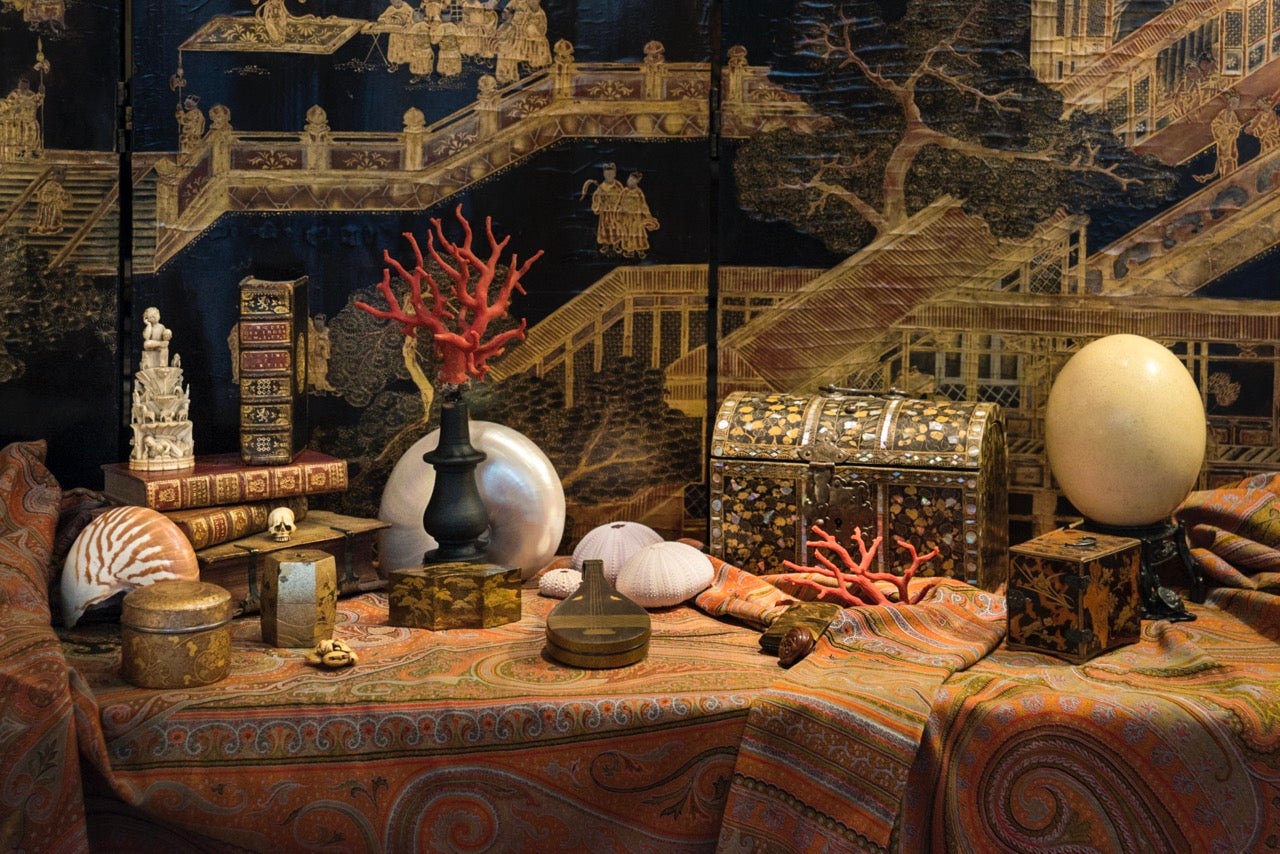
About the Seller
No Reviews Yet
Vetted Professional Seller
Every seller passes strict standards for authenticity and reliability
Established in 2013
1stDibs seller since 2023
Typical response time: Several days
- ShippingRetrieving quote...Shipping from: PARIS, France
- Return Policy
Authenticity Guarantee
In the unlikely event there’s an issue with an item’s authenticity, contact us within 1 year for a full refund. DetailsMoney-Back Guarantee
If your item is not as described, is damaged in transit, or does not arrive, contact us within 7 days for a full refund. Details24-Hour Cancellation
You have a 24-hour grace period in which to reconsider your purchase, with no questions asked.Vetted Professional Sellers
Our world-class sellers must adhere to strict standards for service and quality, maintaining the integrity of our listings.Price-Match Guarantee
If you find that a seller listed the same item for a lower price elsewhere, we’ll match it.Trusted Global Delivery
Our best-in-class carrier network provides specialized shipping options worldwide, including custom delivery.More From This Seller
View AllJapanese ikebana banakago basket of Chinese style
Located in PARIS, FR
Handled circular ikebana basket (hanakago) in Chinese style, in vanished bamboo and rattan. Inside in copper alloy.
Ikebana or Ka-do (the way of flowers) is a traditional Japanese a...
Category
Antique Late 19th Century Japanese Meiji Decorative Baskets
Materials
Bamboo, Rattan
Important Japanese Ikebana basket of an Oblong form
Located in PARIS, FR
Hanakago basket for ikebana in rattan and bamboo. Oblong, rounded on the sides, it features a lacquered bamboo vase.
Rattan braiding scattered over the body, tightly woven over the ...
Category
Antique Mid-19th Century Meiji Decorative Baskets
Materials
Bamboo, Wicker
Hexagonal Japanese Ikebana Basket with an Oblong handle
Located in PARIS, FR
Hexagonal Chinese-style rattan and bamboo hanakago basket for ikebana (karamono hanakago). It features a lacquered and brushed bamboo vase.
The body is tightly braided horizontally, ...
Category
Antique Mid-19th Century Japanese Showa Decorative Baskets
Materials
Wicker
Japanese Bronze Vase decorated with a Phoenix and paulownia leaves
Located in PARIS, FR
Patinated bronze vase decorated with a flying phenix and paulownia leaves. The phoenix has imperial and solar symbolism. This bird of good omen also embodies virtues from the teaching of Confucius (such as goodness, righteousness, and wisdom). Paulownia (kiri) is considered as a symbol of nobility, honor and longevity. Since the Edo era, there has been a tradition that paulownia is planted at the birth of a daughter to be used later as a material for making items that will be part of her dowry. Its wood is ideal for chests and kimono boxes...
Category
20th Century Japanese Showa Metalwork
Materials
Bronze
Japanese ikebana basket made in brass at the immitation of wicker work
Located in PARIS, FR
Rare brass ikebana basket made to imitate the traditional Japanese basketry (hanakago) that usually use bamboo and rattan. Of trapezoidal form with a round opening, a tight collar a...
Category
Early 20th Century Japanese Taisho Decorative Baskets
Materials
Brass
Japanese ikebana bamboo basket - Showa, 20th
Located in PARIS, FR
Ikebana basket (hanakago) made of dark brown varnished bamboo wickerwork rounded shape with a twisted handle.
Ikebana or Ka-do (the way of flowers) is a traditional Japanese art of...
Category
20th Century Japanese Japonisme Decorative Baskets
Materials
Bamboo, Wicker, Wood
You May Also Like
Shoji Hamada Mingei Kakiyu Kaki Glaze Japanese Studio Pottery Yunomi Teacup
By Shoji Hamada
Located in Studio City, CA
An exquisite, beautifully crafted, and wonderfully designed Yunomi teacup by master Japanese potter Shoji Hamada featuring his wax-resistant technique and highly coveted rich Kaki glaze over Mashiko...
Category
Mid-20th Century Japanese Showa Ceramics
Materials
Stoneware
Ogata Kenzan Signed Japanese Asian Edo Period Pottery Tea Bowl Chawan
Located in Studio City, CA
A spectacularly designed and beautifully made Chawan tea bowl dating back to the Edo period. This work is attributed to Ogata Kenzan (1663-1743) who is wi...
Category
Antique 18th Century Japanese Edo Ceramics
Materials
Pottery
Japanese Glazed Ceramic Gohon Chawan Tea Bowl
Located in Atlanta, GA
A bespoken Japanese ceramic glazed tea bowl with fabric insert, pouch and original padded wood tomobako box. The chawan has a slightly irregular wall supported by a high notched foot...
Category
Antique 19th Century Japanese Meiji Ceramics
Materials
Ceramic
Japanese Asian Signed Studio Pottery Wabi-Sabi Ceramic Glazed Chawan Tea Bowl
Located in Studio City, CA
A gorgeous Japanese studio pottery chawan tea bowl that features a mix of shifting colors, glazes and textures as well as elements of Shino Ware and Hagi Ware. The piece radiates in...
Category
20th Century Japanese Showa Ceramics
Materials
Earthenware, Pottery
Rakusai Takahashi III Signed Japanese Shigaraki Pottery Chawan Tea Bowl with Box
By Takahashi Rakusai III
Located in Studio City, CA
A stunning Shigaraki ware pottery chawan tea bowl by famed Japanese master potter the 3rd Rakusai Takahashi. The bowl features a beautiful, unique natural organic ash glaze with wond...
Category
Mid-20th Century Japanese Showa Ceramics
Materials
Stoneware
Kaneshige Toyo National Treasure Signed Japanese Bizen Pottery Chawan Tea Bowl
Located in Studio City, CA
A beautiful, perfectly shaped antique Bizen ware Chawan tea bowl by renowned Japanese master potter/artist Kaneshige Toyo (1896-1967) featuring a unique natural, organic forming ash glaze. Kaneshige is universally considered to be the founder of modern Bizen pottery.
In 1956, Kaneshige was certified as a Living National Treasure (Important Intangible Cultural Heritage) for his work in Bizen Ware pottery/ceramics. Bizen Ware is a type of Japanese pottery traditionally from the Bizen province, presently a part of the Okayama prefecture. It is considered one of the Six Ancient Japanese Kilns (along with Echizen ware, Seto ware, Shigaraki ware, Tamba ware, and Tokoname ware).
The piece is signed/ sealed on the base with one of Kaneshige's traditional incised marks.
A rather engaging and scarce work. Would be a fantastic addition to any Japanese/Asian pottery or Bizen Ware collection or eye-catching stand-alone work in about any setting.
Kaneshige's work can be found in numerous prominent collections and museums including:
Aichi Prefectural Ceramic Museum, Seto, Japan
Brooklyn Museum, NY
Hagi Uragami Museum, Yamaguchi, Japan
Honolulu Art Museum, HI
Ibaraki Ceramic Art Museum, Kasama, Japan
Indiana Art...
Category
Mid-20th Century Japanese Showa Ceramics
Materials
Stoneware
